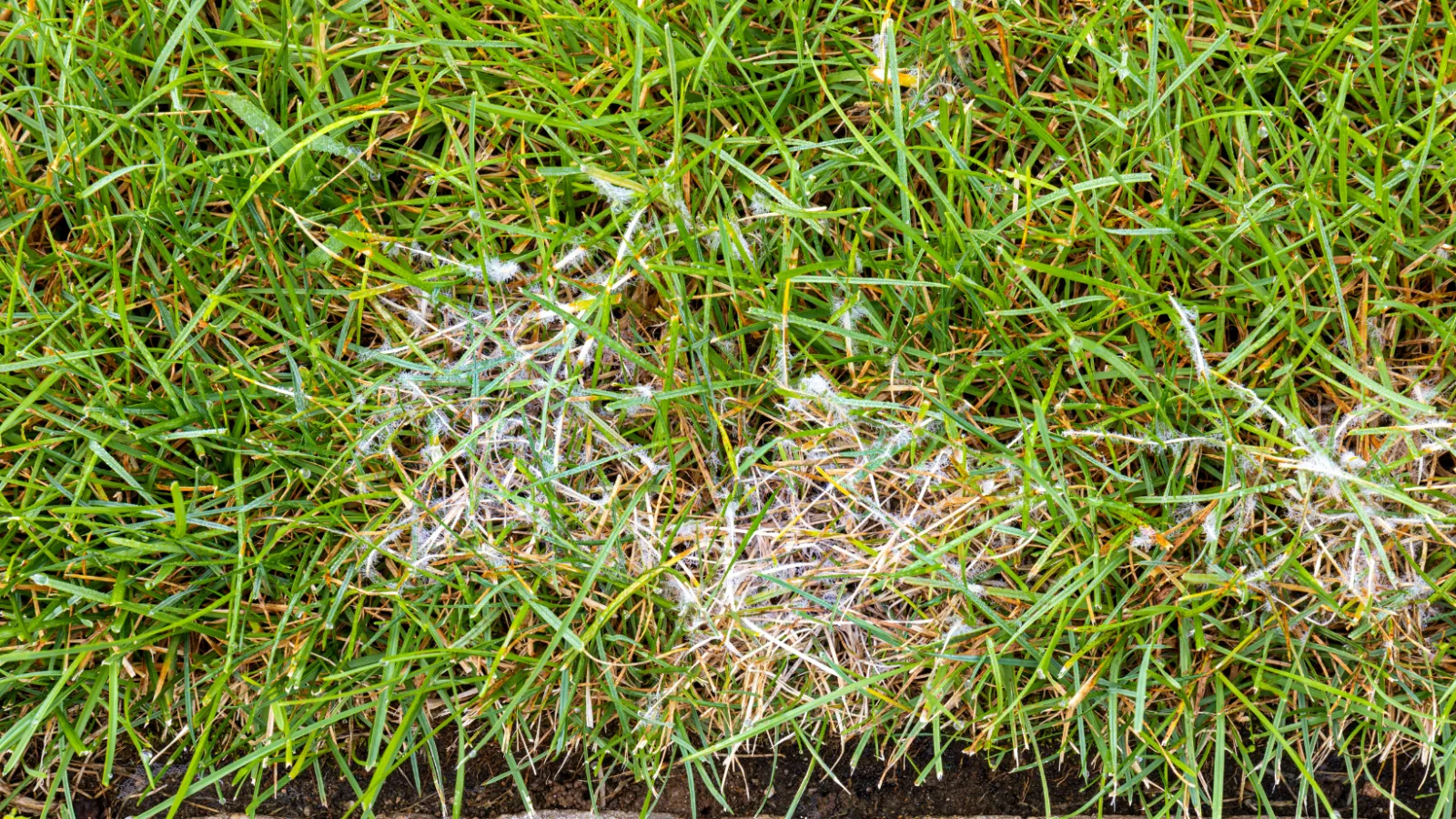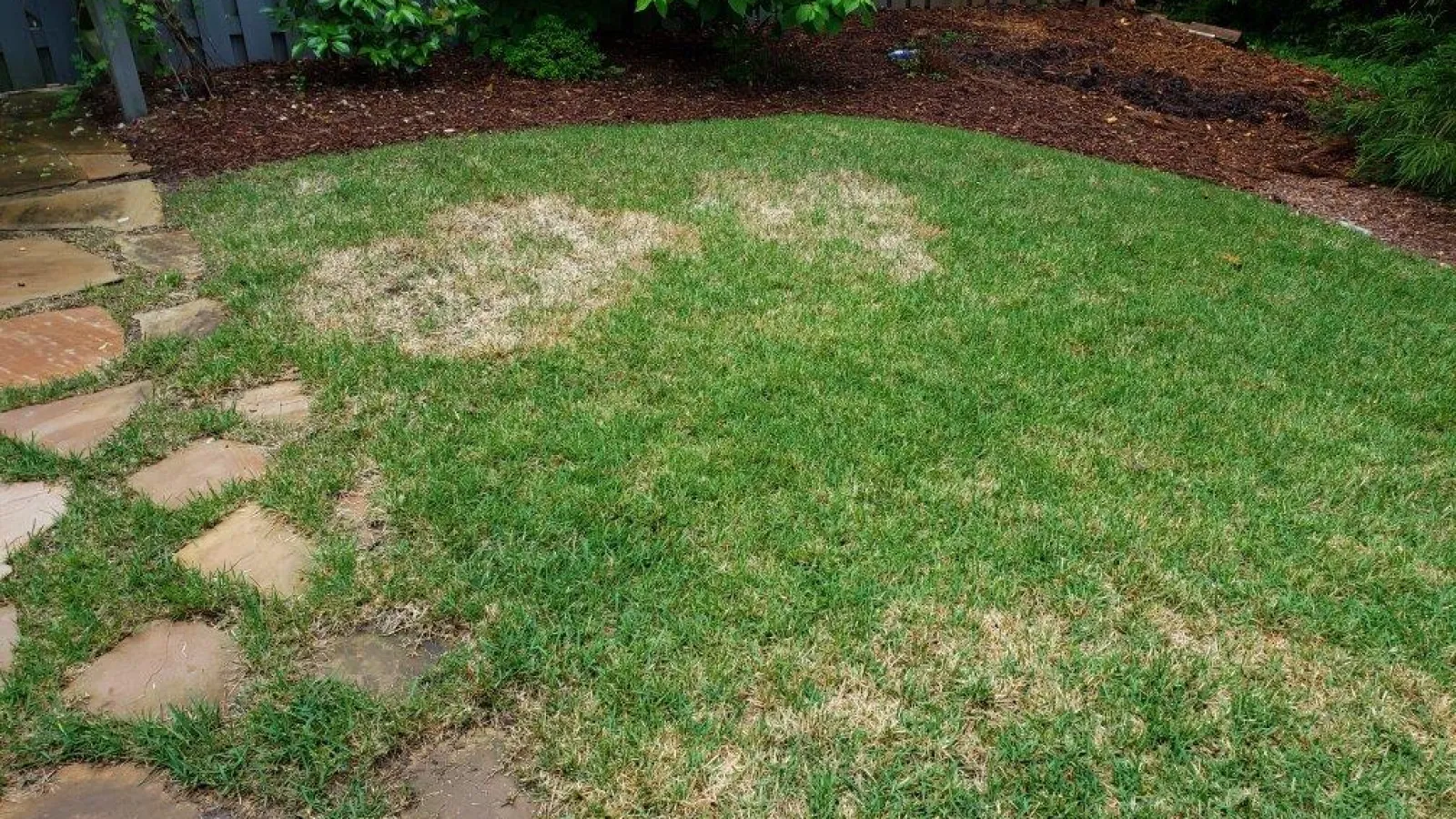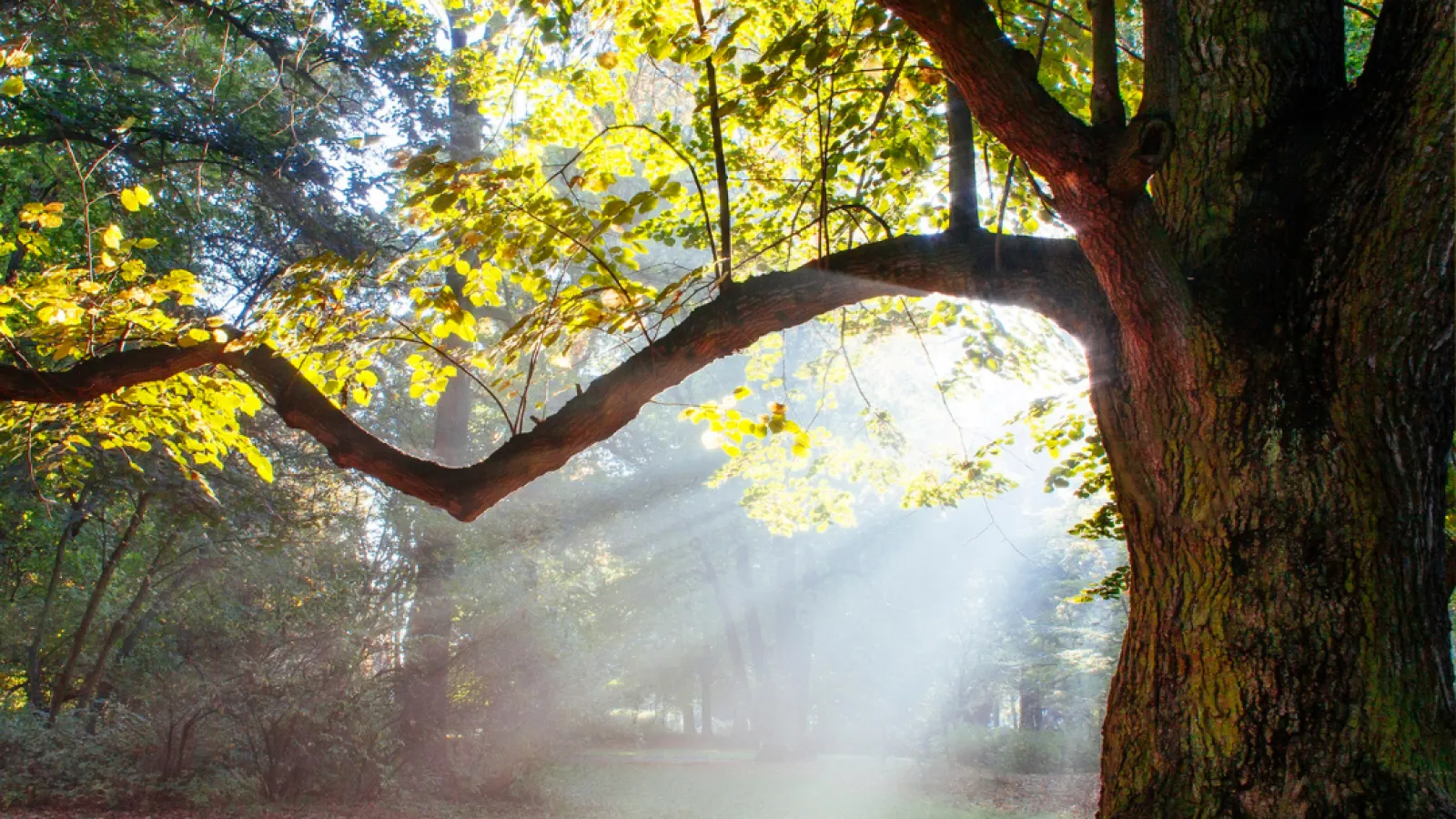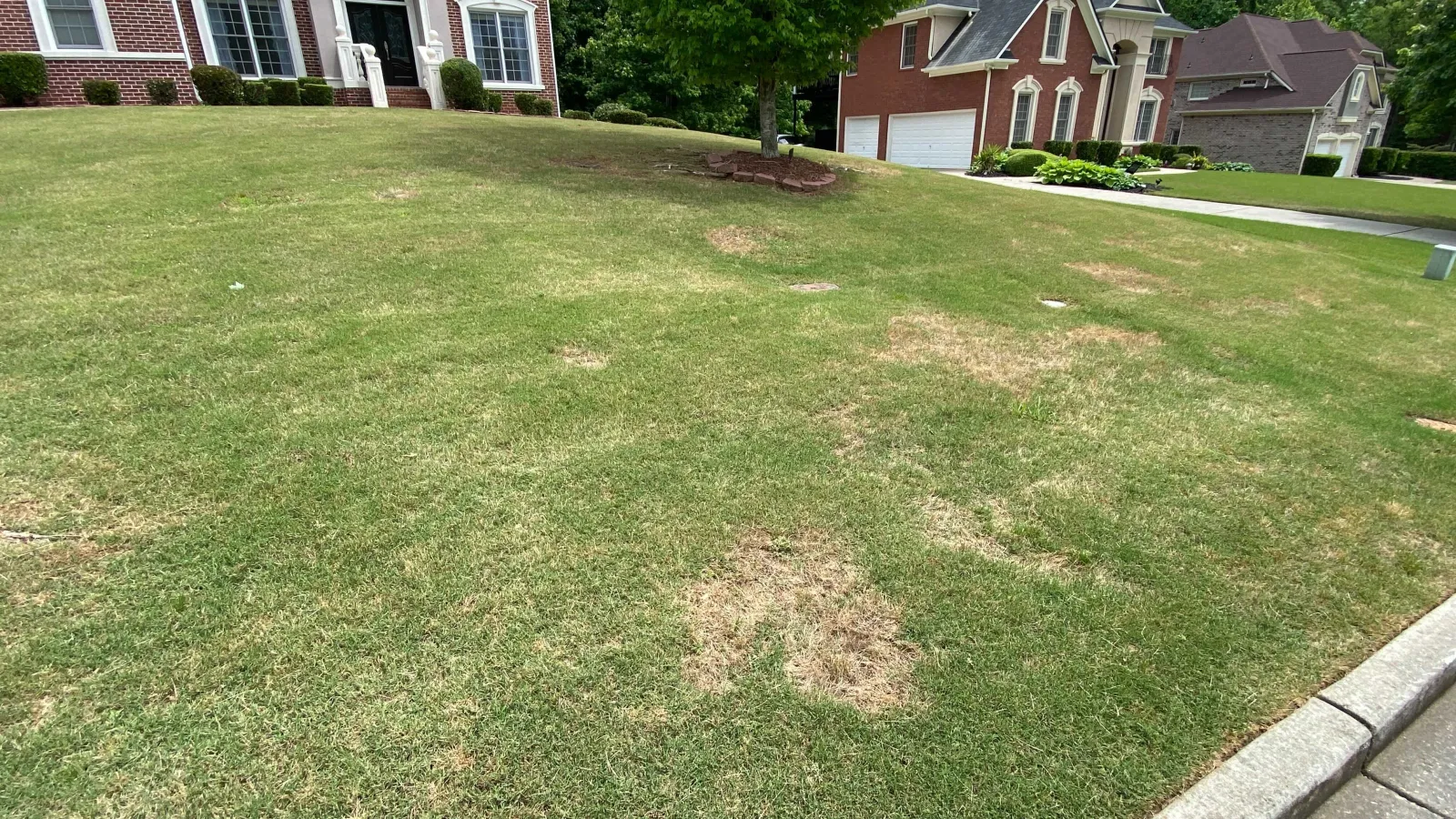
Keep Fungal Diseases Out Of Your Lawn
Lawn fungal diseases in your lawn cannot only be difficult to eradicate, but can also be embarrassing. Diseases like Brown Patch, Zoysia Patch and Dollar Spot are best treated before they start.
Fungicide Treatments are the best solution to control lawn fungi and diseases, or help prevent them if you've had these diseases in the past. Our Fungicide Program is perfectly timed to prevent and correct these issues.
But how do you know if your lawn has fungi? Let's talk more about Brown Patch & Zoysia Patch.
Brown Patch
Brown Patch Fungus begins in Fescue lawns when heat and humidity start to rise. It is caused by the soilborne fungus, Rhizoctonia solani. Brown Patch is one of the most destructive lawn diseases and spreads quickly. Its damage first appears as circular areas of brown, dead grass. The leaves in the damaged area will have little brownish-tan spots with a dark ring on them.
Brown Patch is called Large Patch in warm-season grass like Bermuda, Centipede* and St. Augustine. It is active in the spring and late fall when the lawn is coming out of and going into dormancy, respectively. Infected grass may have rotted leaf sheaths near the soil surface.


Zoysia Patch
The lawn fungal disease Zoysia Patch is caused by the same soilborne fungus as Brown Patch, Rhizoctonia solani. It is most apparent in the spring and fall when the grass is coming out of and going into dormancy. Zoysia Patch survives in the thatch of the lawn. (Thatch is the build-up of undecomposed organic matter above the soil line.)
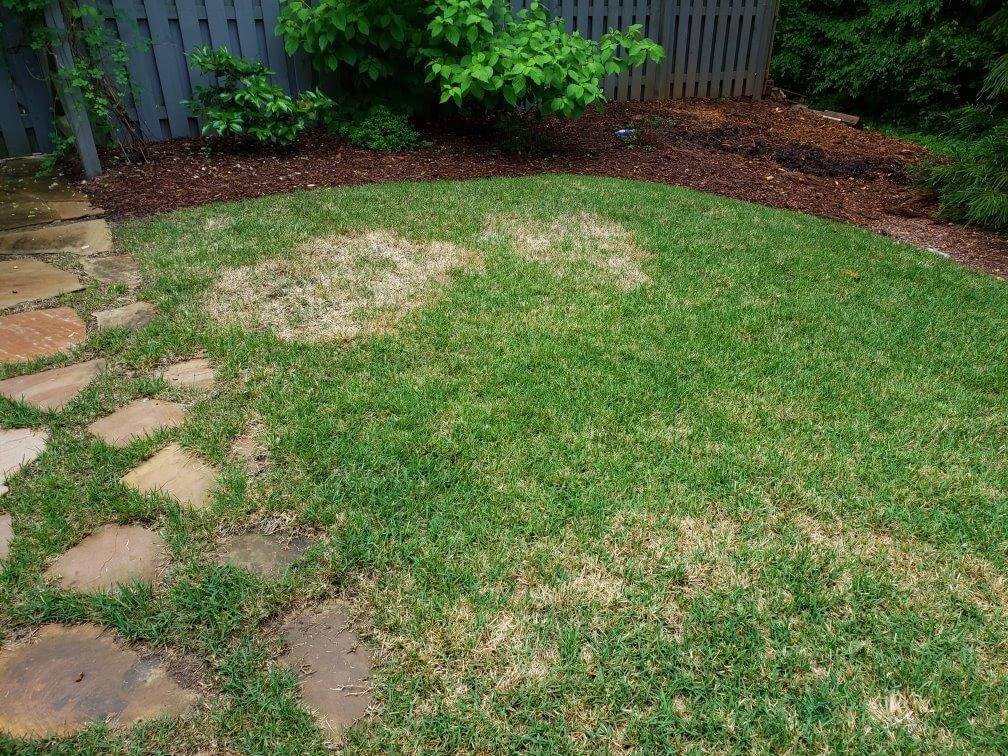
Measures of Control
- Improve drainage to avoid soil saturation
- Do not over-water the grass
- Water infrequently and deeply, preferably in the morning before 10am.
- Mow regularly and do not mow when the grass is wet.
- Bag and remove grass clippings from patch areas.
- Reduce thatch
- Increase air circulation (Remember, trees & shrubs contribute to shade and can limit air circulation.)
- Maintain appropriate nitrogen levels
It is recognizable in your lawn by its irregular patches of discolored grass. The patches have an orange "fringe" around the perimeter and can be as small as 6 inches and as large as 20 feet in diameter. The fringe consists of newly infected plants where the lower leaves are just starting to die, indicating the disease is active.
Following the best practices above, homeowners can reduce the likelihood of Brown Patch and Zoysia Patch; but sometimes, that is not enough to fight these diseases. Spores of R. solani cannot be fully eliminated which is why these diseases often return year and after without proper treatment.

Our Fungicide Program offers a tailored program for your specific lawn type and the fungal diseases that threaten it. It provides perfectly timed treatments for preventative and curative solutions. We even offer tips to help you care for lawn after completing our fungicide services.
If you think your lawn may have one of these common diseases or any other fungal disease, contact us. We are here to help.
*As of May 1 2022, we're no longer accepting new clients with Centipede lawns.
